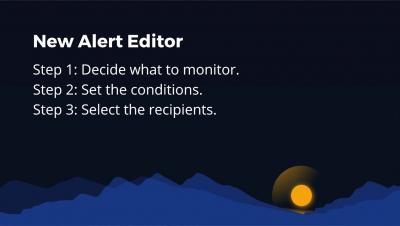Operations | Monitoring | ITSM | DevOps | Cloud
Anodot
Tutorial: Anodot's updated alert editor
Anomaly detection 101
Top 6 Functional AIOps Requirements to Evaluate in Your RFP
AIOps adoption is on the rise. According to Gartner, by 2023 40 percent of DevOps teams will augment application and infrastructure monitoring tools with AIOps platform capabilities. Use cases are also expanding beyond IT to include IT Service Management (ITSM), digital experience monitoring (DEM), DevOps, Application Performance Monitoring (APM) and third party services.
How We're Cutting $360K From Anodot's Annual Cloud Costs
With the pandemic forcing businesses worldwide to reboot, many have no choice but to exact drastic cost-cutting measures to keep the lights on. Cloud computing is an expense incurred by every digital business that, unlike many other operating costs, is largely variable.
9 Key Areas to Cover in Your Anomaly Detection RFP
Evaluating a new, unknown technology is a complicated task. Although you can articulate the goals you’re trying to achieve, you’re probably faced with multiple solutions that approach the problem in different ways and highlight varying features. To cut through the clutter, you need to figure out what questions to ask in order to evaluate which technology has the optimal capabilities to get the job done in your unique setting.
How Correlation Analysis Boosts the Efficacy of eCommerce Promotions
In the first part of the blog series, we discussed how correlation analysis can be leveraged to reduce time to detection (TTD) and time to remediation (TTR) by guiding mitigation efforts early. Further, correlation analysis helps to reduce alert fatigue by filtering out irrelevant anomalies and grouping multiple anomalies stemming from a single incident into one alert. In this part, we throw light on the applicability of correlation analysis in the realm of eCommerce, specifically, promotions.
Correlation Analysis: A Natural Next Step for Anomaly Detection
Over the last decade, data collection has become a commodity. Consequently, there has been a tremendous deluge of data in every area of industry. This trend is captured by recent research, which points to growing volume of raw data and growth of market segments fueled by that data growth.
The Rise of FinOps
As usage-based pricing models have continued to increase over the past decade, particularly for technology companies, there has been a major shift in budget planning and resource allocation. Since CFOs can no longer predict or approve each and every expense before they’re incurred, variations in usage costs can often make or break a company’s profitability. For example, two of the most common usage-based costs come from online advertising and IT-related cloud costs.
The Future of Business Monitoring is Here & it's Autonomous
As the business world continues to integrate AI and machine learning to better manage big data processes, one area that arguably has benefitted the most is business monitoring. From IT management to business intelligence, the last few years have seen a drastic shift in how companies are monitoring their data.





